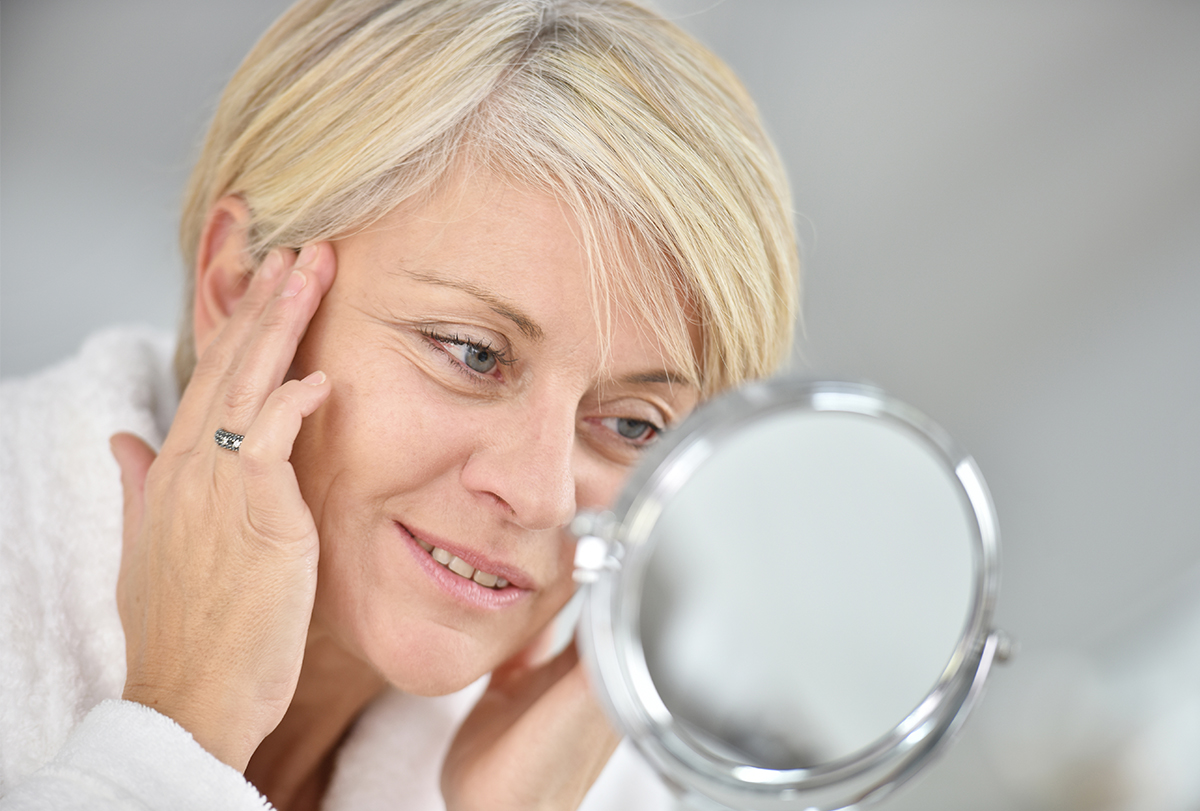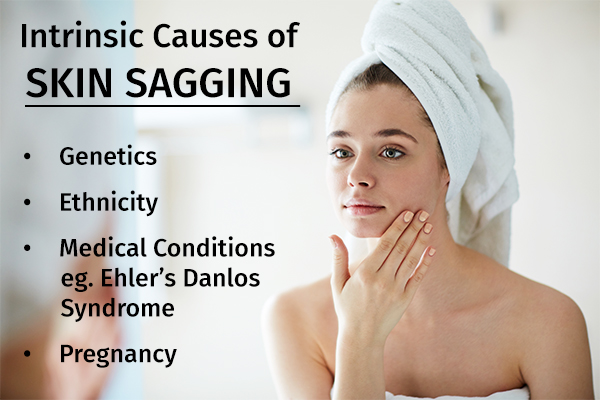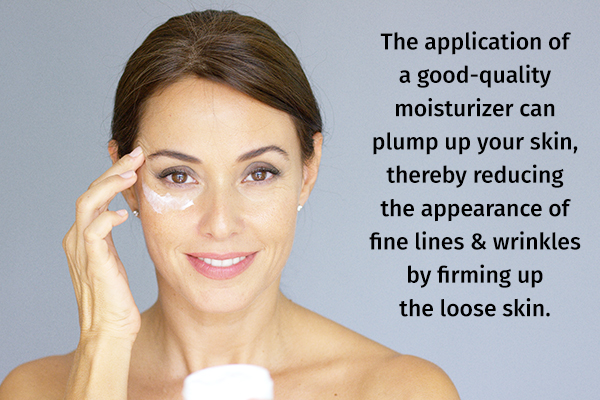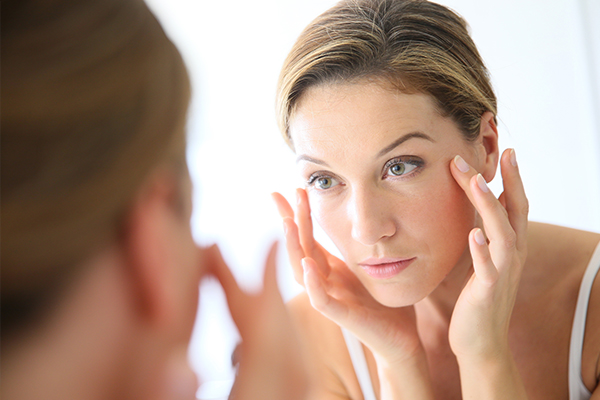In this article:
Human skin is the largest organ of the body and serves as the first line of defense against external irritants. Being the outermost cover of the body, the skin remains completely exposed to the environment and is vulnerable to injuries. This is compounded by the wear and tear of skin cells due to aging, natural bodily changes, or other medical conditions.

Healthy skin is fully capable of repairing itself through a cycle of skin cell regeneration. Every day, people shed thousands of dead skin cells without even realizing it, and fresh new skin cells form in their place.
However, this cycle tends to slow down with advancing age and can get further disrupted by other adverse factors. This then leads to wrinkles, fine lines, and gradual loss of skin elasticity.
Elasticity refers to the ability of the skin to stretch and then return to its original shape without getting loose. Thus, the less elastic the skin, the more it will sag. Saggy skin is one of the prime indicators of skin aging, but it can be a result of other factors as well, which will be discussed in this article.
Loss of Elasticity and Sagging of the Skin
Human skin is made up of structural proteins, namely, elastin, collagen, and proteoglycans, along with other fibrils. All of these components work together to make your skin stretch without breaking (tensile strength) and then return to its original shape (elasticity).
Collagen accounts for 7%–80% of the skin’s composition, making it the most abundant structural protein in the body. Elastin is found in lesser amounts but is much more flexible than collagen.
Collagen gives the skin its volume and tensile strength but makes it rigid, whereas elastin allows the skin to stretch or twist without becoming loose or deformed. Proteoglycans, on the other hand, are responsible for keeping the skin hydrated. (1)
As a person grows older, there is a gradual decline in the production of collagen in the body, accompanied by the release of certain enzymes that break down the elastin fibers. (2) This age-related skin degeneration is often exacerbated or even expedited by other natural, medical, or environmental factors that attack the structural integrity of the skin.
Due to this progressive loss of volume and elasticity, the skin is unable to retain its shape begins to sag. (3)
Causes of Saggy Skin

Skin sagging is a gradual process that primarily occurs due to the loss of elastin, collagen, and other structural fibers in the skin with advancing age. However, several internal and external factors can make your skin age and sag faster than it normally would. (1)
Intrinsic causes of skin sagging include:
- Genetics
- Ethnicity
- Medical conditions, such as Ehlers-Danlos syndrome
- Pregnancy
Extrinsic causes of skin sagging are:
- Prolonged exposure to the UV rays of the sun (photoaging; the main external cause of skin aging) (4)
- Air pollution
- Smoking
- Poor nutrition
- Inadequate hydration
- Excessive alcohol intake
- Sudden and rapid weight loss, such as after a bariatric surgery
Symptoms That May Accompany Saggy Skin
Loose skin is not a medical condition itself, but a sign of skin aging or other forms of skin damage. The areas most prone to skin sagging are your stomach, face, neck, arms, legs, and hips.
Flappy, hanging skin is accompanied by the following symptoms:
- Fine lines and wrinkles, especially on the face
- Loss of skin color, which makes it look increasingly pale or pigmented
- Increased skin sensitivity
Medical Treatment for Saggy Skin

The treatment choice for saggy skin can range from topical creams to invasive surgeries, depending upon the extent of structural damage that needs to be corrected.
Here are some of the most commonly prescribed skin treatments for saggy skin.
1. Skin-tightening creams and lotions
The most basic rule of skin care is to moisturize your skin regularly. Dry, dehydrated skin is less elastic and therefore more prone to wrinkles, fine lines, and sagging.
Even if your skin is oily, it does not mean that it is well hydrated; it is just producing excessive oil. In fact, lack of moisture in the skin often prompts the sebaceous glands to go into overdrive to hydrate the skin.
Moreover, you continue to suffer transepidermal water loss, which is only exacerbated by excessive cleaning of the oily skin. In such a case, using a light-weight, water-based moisturizer can help restore the water loss without adding to the oiliness.
People with sensitive skin should look for a moisturizer that has mild ingredients. Consulting your dermatologist may be a good idea to make the best choice. The application of a good-quality moisturizer can plump up your skin, thereby reducing the appearance of fine lines and wrinkles by firming up the loose skin. However, for these results to be long lasting, you must moisturize every day.
A few other beneficial ingredients to look for in a moisturizer that can help tighten your skin include:
- Vitamin A or its stronger derivatives like retinoid, such as retinol, which can aid the production of collagen and promote skin regeneration. While vitamin A-based moisturizers are easily available over the counter, you will need to consult your doctor before using retinoid products about the proper dosage and use. The latter is usually more effective than the former but can trigger adverse skin reactions if used incorrectly.
- Antioxidants such as vitamin C can help increase collagen synthesis, in addition to fighting free-radical-induced skin damage and enhancing the effects of other skin care products.
- Skin rejuvenating acids such as hydroxy acid or beta hydroxy acid can stimulate shedding of dead, sagging skin layers and the formation of fresh tighter layers.
2. Noninvasive procedures
Noninvasive clinical procedures for tightening loose skin are centered on the principle of applying focused energy to the deeper layers of the skin to stimulate the production of collagen and elastin. (5)
You may require multiple sessions before you can see a visible improvement in your skin tone and texture. (5)
These nonsurgical skin treatments include:
- Radiofrequency treatment
- Intense pulsed light/radio frequency combination treatments
- High-intensity focused ultrasound (HIFU) skin therapy
3. Minimally invasive procedures
If your skin sagging is beyond the scope of nonsurgical intervention, your doctor may recommend any of the following procedures that involve mild skin reconstruction or peeling to make it firmer:
- Laser resurfacing, which is not only the most effective of such procedures but also delivers the fastest results within weeks (6)
- Microneedling (7)
- Chemical peel (8)
- Neuromodulators such as Botox injections
- Thread lifts
- Dermal fillers
4. Cosmetic surgery
Cosmetic surgery is the last resort for saggy skin. It is considered when the damage is beyond the scope of all of the other interventions and is severe enough to cause complications.
Some of the commonly used surgical procedures to repair and tighten saggy skin include:
- Facelift/rhytidectomy
- Neck lift
- Arm lift
- Thigh lift
- Upper and lower body lift
- Eyelid surgery
- Abdominoplasty/tummy tuck
- Body contouring surgery
Complications of Saggy Skin

If left untreated, saggy skin can induce the following complications:
- Excess skin tends to form folds that rub against one another, known as chafing. This friction tends to damage the superficial layer of the skin (epidermis), resulting in rashes, irritation, and skin tears that can invite infection. Skin chafing commonly occurs in the thighs, groin, underarms, or stomach, but it can be experienced in any area where there is extra loose-hanging skin.
- Skin folds trap a lot of sweat and dirt and are difficult to clean. The moisture, heat, and uncleanliness can be a breeding ground for fungal skin infections.
- Saggy skin can make you self-conscious about your physical appearance and lower your confidence. It can even trigger body dysmorphia in some people.
When to See a Doctor
Gradual age-related skin sagging is a natural process that is more of a cosmetic issue rather than a health concern. But it may require medical attention in the following cases, mostly to rule out any underlying health problem and to avoid potential complications:
- If the skin begins to sag all of a sudden
- If the pregnancy-induced skin sagging is accompanied by diastasis or separation of the abdominal muscles
- If the extra skin is prone to chafing, resulting in skin irritation and damage
- If saggy skin is giving you stress, anxiety, and body image issues
Final Word
Skin is composed of multiple layers; the outermost layer is the epidermis, below which lie the dermis and the deeper dermis.
Sagging of the skin is primarily the result of inadequate collagen production and damaged elastin fibers. Both these structural proteins are mostly found in the deeper skin layers, so any superficial treatment to the epidermis will have little to no impact in firming the skin from within.
To comprehensively address the problem of loose skin, you will require treatments that restore collagen or elastic tissue in the deeper layers of the skin.
As far as skin aging and skin sagging are concerned, prevention is easier than cure. While there is nothing you can do to stop the aging process, proactively following a skin care routine right from your 20s can help your skin remain young, taut, and supple for longer.
Once the damage occurs, there is only so much you can do to reverse it. Surgery can help dramatically lift your excess skin, but it is an invasive, expensive process that requires postoperative maintenance to sustain the results and avoid complications. Your doctor will assess the degree of skin sagging and other relevant factors to recommend the appropriate course of treatment.

- Was this article helpful?
- YES, THANKS!NOT REALLY


